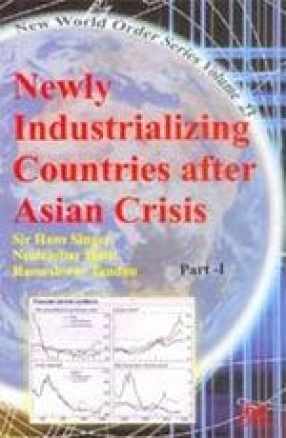
Sir Hans Singer

Showing all 9 books






International trade theory explains the patterns of specialization like cross-country differences in tastes, technology and factor endowments. Traditional trade theory emphasizes comparative advantage as a source of trade. The Ricardian theory predicts that a country will export the products in which it has a comparative advantage. The Ricardian model was very helpful for several issues such as the effects of technological progress on the patterns of ...

If open world trading system continues to be the ultimate goal, then several important questions come up-whether the rise of Regional Trading Arrangements (RTAs) should be welcomed as a step on the road that will ultimately reinforce global free trade or whether regional trading blocks should be condemned as institutions that undermine the multilateral system. Despite GATT requirement that all trade arrangements must submit to a review, no existing arrangement ...

Recent years have witnessed the emergence of several environmental agreements, with trade-restricting provisions, extraneous to the GATT System. Widespread fears have also been expressed that trade liberalization and growth of global trade would cost heavy environmental damage and expanding environmental regulations would create new barriers for trade flows. The current prescriptions for solving these problems are utterly inadequate and do not recognize the basic ...

This volume brings together recent research work relating to the following elements of technology diffusion: 1. Technological competitiveness and DFI. 2. Role of diffusion of technology. 3. Globalization and technological change. 4. Geographical sources of competitiveness. 5. Internationalization of MNCs: case studies--China, Japan and India. 6. Internationalization of Latin American MNCs. 7. Third World MNCs and linkages. This series is dedicated to Raul ...

The General Agreement of Trade in Services (GATS) is included as Annexe IV to the final text of the Uruguay round agreement. It provides a multilateral framework of principles and rules which should Govern Trade in Services under conditions of transparency and progressive liberalization. It spells out certain general obligations such as extension of MFN principle, maintenance of transparency and a commitment for liberalization in general terms. GATS has been ...

The dominant feature of the world economy in new century is its increasing globalisation and growing fear of its consequences; it also shows marked reversal of attitudes in the third world from the time of Raul Prebisch. In a more independent world economy, any global or regional shock (e.g., the Asian crisis or Russian crisis of 1997-98) is rapidly propagated to other countries. We hear a lot about the creation of a borderless world and the end of nation state. ...

The Uruguay Round of Multilateral Negotiations marked a watershed in the history of the GATT. The final Act embodying the results of Agreement provides a number of agreements creating new international obligations in the area of financial services and extending GATT’s obligations to protection of IPRs, the TRIMs and measures affecting the contestability of service markets. Calls for Post-Uruguay Round negotiation have identified issues such as competition ...

In Africa, more than a decade of economic reforms produced a few cases of renewed growth as also optimism. Of course, all countries in the region, which were, confronted with several constraints e.g. low human capital development, inadequate infrastructure, rapid population growth etc. Growth and development require a predictable regulatory framework and transparent public administration along with an independent judiciary. All these are ...

During the 1990s, the official and private flows showed opposite trends; while the former tended to decline over the years but private capital flows showed significant growth. In view of instability of private capital flows, various emergency packages were designed. But the official development finance and bilateral and consistently lagged behind; at present it is just one third of agreed target of 1 p.c. of GNP of developed countries. Above trend was partly ...
